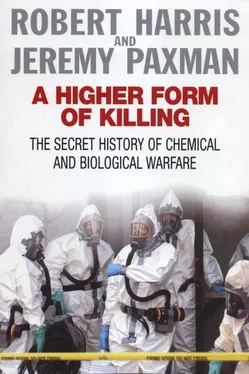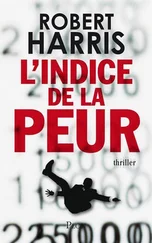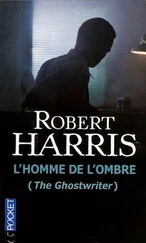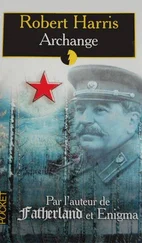Foulkes tried his best to play down this image. He was tireless in his efforts to promote gas. He acted as its ambassador, even to neutral nations not fighting the war but who wanted to know more about the potentialities of chemical weapons. He introduced ‘Open Days’ at the Special Brigade’s HQ at Helfaut. There were regular demonstrations to convince the sceptical. ‘On several occasions,’ Foulkes recalled, ‘there were more than 100 Generals present at time, and 300 or 400 officers altogether.’ Winston Churchill visited Helfaut and came away, according to Foulkes, powerfully impressed by chemical warfare – a conviction which was to be of crucial importance a quarter of a century later, when Britain was next at war. Other VIP visitors included the Duke of Westminster and George Bernard Shaw.
This public relations exercise was useful, but in the end Foulkes won the battle against the critics of gas warfare through simple military expediency. A chemical arms race developed, in the rush of which there was no time to worry about ethics. Soon, virtually every leading chemist in Britain was at work on some aspect of gas warfare. Thirty-three different British laboratories tested 150,000 known organic and inorganic compounds in an attempt to develop the most poisonous war gas possible, and in 1916 this massive research and development organization was given its focus when the British opened an installation whose name has been synonymous with poison gas ever since – the chemical warfare establishment at Porton Down. Occupying a 7,000 acre site on Salisbury Plain, Porton (whose work is described in Chapter Two) employed over a thousand scientists and soldiers whose job it was to transform the theories of the laboratory into actual weapons.
In a short time, chemical weapons moved from the fringes of the war to its very heart. In 1915, 3,600 tons of gas were discharged. In 1916 that figure more than quadrupled, to 15,000 tons. Chemicals and aeroplanes vied with one another as the fastest-developing forms of warfare. Gas attacks ceased to be carefully-planned set-piece affairs; they became an everyday occurrence. For the British, the expansion was due in particular to two new weapons – the Livens Projector and the Stokes Mortar – which despite their prosaic titles were innovations as deadly as they were revolutionary. ‘The heirs of the Livens Projector,’ one expert has written, ‘are the multiple rocket launchers and the aircraft cluster bombs.’ 30
Captain F. H. Livens, the inventor of the Projector, was marked by two key characteristics – a passionate hatred of the Germans, and unflagging energy. A former civil engineer and commander of ‘Z’ Company of the Special Brigade, ‘Livens,’ recalled Foulkes, ‘had a strong personal feeling in the war connected, I believe, with the sinking of the Lusitania. ’ He was a ‘go-getter’, enthusiastically leaping in and out of gas clouds to test their effects, and prone to commandeer equipment he needed, if necessary, at the point of a gun.
His invention was crude, but so effective that it was still one of the army’s main chemical weapons thirty years later. The Projector was a steel tube, generally between three and four feet long, and eight inches in diameter. It was simply buried in the ground at an angle of 45 degrees, and fired remotely by means of an electrical charge, generally in banks of twenty-five at a time. The charge sent hurtling from the tube a drum containing 30 lb of chemical, usually pure phosgene. The only warning the enemy received was the flash of the discharge. Seconds later a core of TNT burst the container over their positions, setting up an instantaneous, lethal concentration of gas. Rather than releasing the clouds of gas from cylinders which then placed them at the mercy of the wind, the Livens Projector was effectively a means of dropping the cylinders on the heads of the enemy. It was not particularly accurate, but it had a range of a mile, and was also cheap and easy to make. Livens calculated that if the Projector was mass-manufactured ‘the cost of killing Germans would be reduced to only sixteen shillings apiece’.
The British first launched a full-scale attack using the Livens Projector at the Battle of Arras on 9 April 1917:
The discharge took place practically simultaneously: a dull red flash seemed to flicker all along the front as far as the eye could reach, and there was a slight ground tremor, followed a little later by a muffled roar, as 2,340 of these sinister projectiles hurtled through space, turning clumsily over and over, and some of them, no doubt, colliding with each other in flight. About twenty seconds later they landed in masses in the German positions, and after a brief pause the steel cases were burst open by the explosive charges inside, and nearly fifty tons of liquid phosgene were liberated which vaporized instantly and formed a cloud so dense that Livens, who watched the discharge from an aeroplane, noticed it still so thick as to be visible as it floated over Vimy and Bailleul villages. 31
The terrors of the gas cloud and the artillery bombardment were combined in a weapon which the Germans came to view with particular horror. A captured German document spoke of the ‘violent explosion’ of a projector attack: ‘volcanic sheets of flame or the simultaneous occurrence of many gun flashes, thick black smoke clouds, powerful concussion, whistling and noise of impact up to 25 seconds after the flash of discharge… the noise resembles that of an exploding dump of hand grenades.’ 32At Arras, the German gun crews were forced to wear their masks for hours on end; many ran out of ammunition as the gas killed hundreds of horses used to carry munitions up to the front.
It was virtually the only time the Allies took the Germans by surprise with a new chemical weapon in the entire war, and despite German attempts to copy it the Livens Projector marked a major shift in the chemical war in favour of the Allies. Its drawback was the amount of preparation which a successful projector attack required: installing, loading and camouflaging them was a risky business. Nevertheless, the British used them on an increasing scale, often in batteries of thousands at a time. New fillings of high explosive and incendiaries were developed, as well as ‘stinks’ like bone oil and amyl acetate whose obnoxious smell forced the enemy to don gas masks.
The Battle of Arras also saw the widespread use of the Stokes Mortar. Like the Projector, its design was extremely simple: a steel tube raised at an angle by two struts. It fired four-inch mortar bombs, each containing two litres of gas. A well-trained crew could fire fifteen bombs and have them all in the air before the first one hit its target, with pin-point accuracy, as much as 1,000 yards away.
In addition to mortars and projectors came the gas shell, whose whistling flight and thudding impact became familiar noises in the cacophony of battle. The French and the Germans used them early in 1916, and large-scale shelling by the British came in the following year. By 1918 between a third and a fifth of all shells were being filled with chemicals. The Germans actually named their gases after the markings on the shell cases: Green Cross for phosgene and chlorine, Yellow Cross for mustard gas, and White Cross for tear gas.
Gas-filled artillery weapons overcame much of the initial antagonism felt for chemical warfare among military planners. Gas could now be more easily integrated into an attack, there was less dependence on the wind, and leaking cylinders – which often gave warning of an impending attack by sending hundreds of rats fleeing across No Man’s Land – were largely banished from the trenches. By 1918, 94 per cent of all the gas used was being delivered by the artillery: an over-all total for the war of 66 million gas shells. Shelling on this scale meant that chemical warfare, once an unexpected and terrifying experience, was now an ever-present threat. For in July 1917 the Germans began to use a gas weapon whose power dwarfed anything which had gone before and which was only made possible by the development of the gas shell: dichlorethyl sulphide.
Читать дальше












